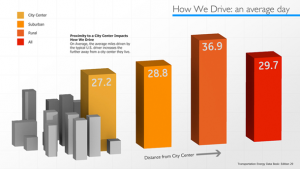Having a clear plan is important when it comes to digital marketing.
After all, you can’t achieve your goals if you don’t have an objective path to how you intend to get there.
Keyword mapping is one form of planning that makes it easier to identify specific keywords within your niche and determine where on your website they should go.
The process is incredibly simple but does take a little bit of time and keyword research to implement.
The end result, however, is a cohesive website that makes it easier to rank high in the SERPs and give your target audience the informative and engaging content they’re looking for.
You could even say it is the real cornerstone of true search engine optimization (SEO).
Ready to learn more about what keyword mapping is and how to do it?
Let’s jump in and get started.
- What is Keyword Mapping?
- What Are the Benefits of Keyword Mapping?
- How to do Keyword Mapping?
- Why Keyword Mapping Never Stops
- Wrap Up: Keyword Mapping for Better SEO Results
What is Keyword Mapping?
Keyword mapping is the researching and planning of the keywords and long-tail phrases that go on a website.
It is an essential part of the content creation process, as it makes it easier to determine the best places to group semantic keywords together in a way that seems most logical.
Furthermore, keyword mapping is an excellent way to remember what terms are used in what section of your page and helps your copywriting team formulate topics more effectively.
In fact, you could probably even say that your keyword plan is like the treasure map to finding those coveted first-page positions in the SERPs.
Typically, keyword maps include one focus keyword for the primary topic of the page and several secondary keywords for support.
Most documents also cover aspects of the page, such as the page title, meta description, and the overview of what the page itself should cover.
While there is no set format to create a keyword map, most digital marketers simply keep a spreadsheet with this information and refer back to it as necessary during the content creation process.
What Are the Benefits of Keyword Mapping?
When it comes to content marketing, you can’t just expect to write any old blog post or article and expect it to immediately bring in tons of organic traffic to your website.
Instead, you have to have a strategy and organization structure that works for your needs.
Here are a few of the top benefits of keyword mapping:
It Keeps Your Keywords Organized
As you can probably already tell, keyword mapping is crucial to the content creation process.
Not only does it allow you to layout the various terms as to which ones are primary and supporting, but it keeps you from crossing over too many times with other sections of your website.
It Prevents Duplicate Content
When you have a keyword map, your entire team knows where certain topics go based on their coordinating keywords.
Likewise, this keeps you from creating content pieces that duplicate a particular topic or compete with each other in the SERPs for the same position — a term called keyword cannibalization.
Essentially, keyword organization prevents extra work without any real benefit.
It Helps You See Holes in Your Content Marketing
Have you ever written and posted a ton of content to your website, only to realize that you’re missing out on a huge topic that you completely forgot to cover?
If you have a keyword map, this won’t happen.
Instead, you’ll see all of your various topics organized neatly and can spot areas where there are gaps or holes.
It Makes Content Writing Expectations Easier to Communicate
Whether you’re hiring an outside copywriter or using your own in-house team, a keyword map helps make content expectations easier to communicate.
For example, already knowing the main topic, primary keyword, and secondary keywords ahead of time ensures your draft is better focused to the same tone and structure you’re looking for.
How to do Keyword Mapping?
Although it might sound complicated, the process of keyword mapping is actually relatively simple.
The only downside is that it does take a little bit of extra time initially to add to your workflow.
However, the ability to have all of your content creation information in one central location actually saves you effort later on, which is definitely a bonus.
Here’s a quick guide on how to handle the process:
Step One: Setup Your Spreadsheet
The first real step in creating a solid keyword map is to set up your spreadsheet document.
This can be either Excel or Google Docs depending on your preference, but we recommend the latter if you’re going to have team members collaborating together.
Include headings for the following:
- Page ID
A quick reminder of what your page is about.
- URL
The address of the page once published.
- Page Title
Keyword-rich title for the page.
- H1 Tag
The first title tag used in the piece including your primary keyword.
- Primary Keyword
Your focus keyword for the entire page.
- Secondary or Supporting Keywords
Any secondary or supporting keywords, including semantic versions of the primary keyword.
- Page Summary
A quick one or two sentence blurb about what the page is supposed to be about.
Depending on whether you’re mapping an existing website or creating a new one, you might need sections that show what the current items are and where you propose making better-optimized changes.
Step Two: Do Keyword Research
Next, it is time to dive in and do your keyword research.
How you complete this process is up to you, but make sure you’re taking into account elements like overall search volume and keyword difficulty.
Put together a second spreadsheet document or page in your existing keyword map to arrange these items together.
Then decide which topics are similar enough that they should end up on the same page.
These can be variations of the same question or term, those that compliment the same angle for your niche, or whatever makes the most sense.
Group them together before moving on in the process.
Step Three: Map Out Your Keywords
Now is the time to finally map out your keywords.
Decide which ones go on what pages and add them to the initial keyword mapping spreadsheet.
Choose a primary keyword and use it to create your page title, meta description, H1 tag, and other elements.
Finish filling out the fields for each page, working to make sure each one is different from the others in the outline.
If desired, you can also make note of related pages for internal linking and content siloing.
Step Four: Create Content and Publish
Finally, you’ll want to go ahead and create the content you’ve outlined in your keyword map.
This is the time when you’ll really start to see the benefits of your effort and understand why the whole process is crucial to your success with SEO and organic traffic.
Why Keyword Mapping Never Stops
It’s important to note that once you’ve finished your keyword map, you’ll be back to work on it later.
Why? The process of keyword mapping never fully stops.
Instead, your spreadsheet is something you’ll add to on a weekly or monthly basis, depending on your editorial calendar.
As you build out your website bigger and bigger, you’ll need to refer back to your outline to ensure you aren’t duplicating content in any manner.
Likewise, your team will want to check back to see if some of the keywords you used months or years ago are even still relevant.
Sometimes, you’re able to find better ranking terms later as trends change and need to alter your content and map accordingly.
Associate with White Label SEO solutions
There is also an extra possibility, and it is becoming an agency to manage all your clients with good content and SEO services.
Being this your case, how about to start or expand your services, by getting in touch with us to become a partner with White label SEO.
This way you provide SEO services to your customers, but without the need to hire specialized staff, invest in individual tools, or learn SEO from scratch.
Wrap Up: Keyword Mapping for Better SEO Results
Creating a keyword map for your content is a great way to keep everything organized, prevent keyword cannibalization, and ensure your entire team is on the same page in terms of what goes on each page of your website.
By taking the extra time now to complete one of these documents, you’ll save tons of effort later and could achieve better overall SEO results.
Has it been a long time since you’ve checked your website’s search optimization stats?
Our Rock Content SEO Maturity Assessment can help! Let us guide you to the best ways to fully fine-tune your overall organic traffic strategy.










